Oklahoma’s 82 Wildlife Management Areas are prime wildlife-watching locations, offering chances to see everything from forest to grassland species. But several WMAs truly deliver when it comes to watching wetland wildlife!
One such area, Red Slough WMA, is a great place to get your watchable wildlife feet wet. Cooperatively managed by the Oklahoma Department of Wildlife Conservation, U.S. Forest Service, and the Natural Resources Conservation Service, the area has been home to at least 320 species of birds, 88 butterflies, and 57 reptiles and amphibians. Many of these species are considered to be wetland dependent and are found only where this habitat occurs.
As you plan your next trip to a wetland WMA, consider these tips:
Take a Walkabout
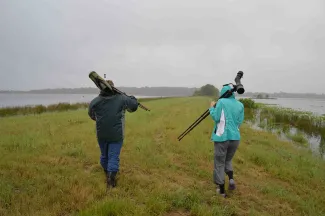
Wetlands provide a great opportunity to get your wildlife-watching feet wet! These diverse habitats not only welcome a number of secretive birds, but also serve as homes for small mammals, reptiles, amphibians and invertebrates.
Walking is the best way – and one of the only options – to explore Red Slough WMA; motorized vehicles are not allowed on the area. In addition to getting an extra dose of exercise, visitors that hike along the extensive dike system can witness one of the many keys to attracting the incredible diversity of wildlife found at Red Slough WMA – maintaining varied water depths.
Wildlife have certainly adapted to these differing water levels – taking full advantage of the different food sources and hiding spots. Larger wading birds often take advantage of deeper water where they can stalk their prey while smaller shorebirds are more often found at the water’s edge where they can probe the mud for invertebrates. Though quick to retreat to their underwater safe zone, turtles can be seen basking along the banks or on fallen logs that arch over more shallow water.
Wetland wildlife aren’t restricted to the water at Red Slough WMA. Trees and shrubs growing along the edges of wetland units are great places to watch for sparrows, warblers, butterflies and dragonflies.
Zoom In
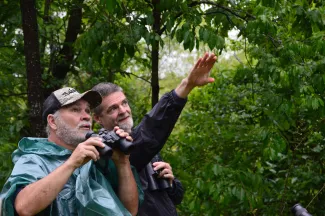
Regardless of your species of interest (be it birds, reptiles or invertebrates) consider adding a trusty set of binoculars, a spotting scope or a zoom camera lens to your day pack. Many wetland species are secretive and may not stay visible for long periods of time. Zooming in may help you spot a shy animal, or assist with identification.
Scan the Borders
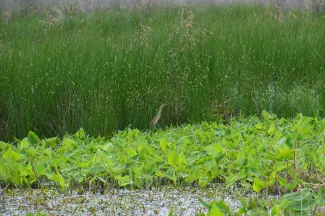
While some species can be regularly found in open water, others can be found using the borders or habitat edges. Slowly follow the visual boarders within the wetland, especially where water levels change or vegetation types transition. You may get an unexpected look at a secretive rail or bittern!
Get a Different Perspective
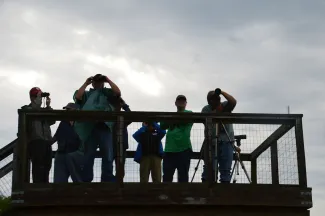
Take advantage of resources like clearings, hilltops or viewing platforms to get the best view of the habitat, and what may be waiting for you down the road. Nine viewing platforms are located across Red Slough WMA for elevated wildlife and habitat viewing.
Share What You See
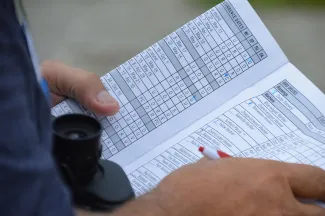
After watching wetland wildlife at Wildlife Management Areas, consider reporting your sightings at citizen science outlets like iNaturalist or eBird. Sharing the findings of your trip can help other nature enthusiasts plan their trip, and help biologists track the wildlife found at these wetland hotspots! A list of wildlife and plant species that have been documented at Red Slough WMA and a photo gallery of the area can be found at the Ouachita National Forest’s website.